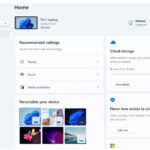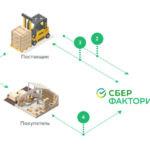
Автор:
Производитель: CBT Nuggets
Год выпуска: 2011
Продолжительность: 11:31:43
Тип материала: Видеоурок
Язык: Английский
Стоимость: 1999 рублей
Описание:
This Oracle Database 11g SQL Fundamentals 1 1Z0-051 course, trainer Timothy Warner will cover retrieving, restricting, manipulating, and sorting data, subqueries, database security, and more. He will also provide the information necessary to pass the 1Z0-051 exam.
Related Area of Expertise:
Database Development
Data, data everywhere…take control of your database and learn to manipulate it with the tried-and-true Structured Query Language (SQL) in Oracle Database 11g. Whether you're an IT pro who wants to add Oracle DBA and SQL querying to your tool belt, a DBA in another technology who wants to dive into Oracle, or a newcomer to relational databases who yearns to learn SQL, this course will give you what you need to reach your goal.
In this course, you'll gain SQL proficiency and be able to take control of your data. Best of all, you can apply the skills you learn not only to Oracle, but to almost any RDBMS platform! And, trainer Tim Warner gives you all sorts of cool supplemental learning references -– all of the SQL work files can be downloaded free at nuggetlab.com, and the course is filled with recommendations for white papers, Web sites and more.
Once you've finished this Nugget course, you'll be fully prepared to pass the 1Z0-051 SQL Fundamentals exam – and be ready to move on to the next in line for the Oracle DBA OCA track. More importantly, you'll gain an extremely useful and portable tool that will help you make the most of your database.
[wpspoiler name="Подробное описание" ]
1. Course Introduction (00:18:23)
In this nugget, we start by defining what Oracle is and how it fits into the concepts of the database, relational database, and relational database management system. Next we perform a deep-dive into the Oracle certification program, learning exactly how the current course maps to the Oracle Certified Associate (OCA) credential. We also provide tips and tricks for getting the most out of the training, and give suggestions on how to pass the 1Z0-051 exam with a minimum of muss or fuss.
2. About SQL (00:41:33)
In this nugget, we set the stage for the rest of the training. Here we formally define the Structured Query Language (SQL), explaining its basic modes of operation, as well as how Oracle's implementation of SQL stacks up to the ANSI/ISO standard as well as other vendors' implementations. We complete this nugget with quick-start tutorials on how to use SQL*Plus as well as Oracle SQL Developer.
3. Retrieving Data By Using the SELECT Statement (00:38:10)
The SELECT statement is the universal workhorse of SQL. In this nugget we discuss both the theory and practice of using SELECT to retrieve query results from Oracle database.
4. Restricting and Sorting Data (00:37:24)
In this nugget we continue our discussion of the SQL SELECT statement, this time learning how to pare down our query results by employing the powerful WHERE clause. We also learn how to sort our query results by leveraging the ORDER BY statement, and finally begin to write more dynamic, interactive SQL by using substitution variables.
5. Using Single-Row Functions to Customize Output (00:36:51)
In this nugget we introduce the concept of the function, both from a general mathematics standpoint, and then with sharper focus on Oracle Database 11g. We spend our time learning to master the basic character, number, and date functions that you'll be expected to understand on the SQL Fundamentals certification exam.
6. Reporting Aggregated Data Using the Group Functions (00:30:04)
In this nugget we apply many of the function-related principles we picked up in the previous nugget. Here we learn how to aggregate data across multiple table rows by employing both grouping functions as well as the GROUP BY SQL statement. We also will understand how to filter grouped rows by using the HAVING clause.
7. PL/SQL Basics (00:36:03)
In this nugget we truly round out our Oracle SQL skills by conducting a survey of PL/SQL, Oracle's procedural programming extensions to the Structured Query Language. By the end of this nugget you will not only understand the basic nomenclature and syntax of PL/SQL, but you'll also be able to write basic PL/SQL blocks, both the anonymous and named varieties.
8. Displaying Data from Multiple Tables (00:38:11)
In this nugget we truly begin to see the great beauty of the relational database model. Here we learn how to query across multiple related tables by using joins. In addition to learning all about the supported join types in Oracle Database, we will also flirt around with the concept of constraints, two of which (primary key and foreign key) are crucial to our understanding of the relational model.
9. Using Subqueries (00:24:21)
In this nugget we broaden and deepen our usage of the SELECT statement by learning how to embed one SELECT inside of another SELECT; this is called a subquery. As we'll learn, subqueries are useful for data load scenarios as well as when we aren't quite sure which row(s) we need to evaluate in a WHERE clause. By the end of this nugget you will not only understand how subqueries work, but you'll be able to write both single-row and multi-row subqueries in either the simple or correlated processing formats.
10. Using the Set Operators (00:23:51)
SQL is a set-oriented database access language. In this nugget we learn various methods of combining multiple result sets. Here we master the use of the UNION, MINUS, and INTERSECT keywords in combining multiple queries into a single result set.
11. Using DDL Statements to Create and Manage Tables (00:46:29)
In this nugget we formally treat the subject of creating, altering, and dropping database objects; this collection of SQL commands is formally called Data Definition Language, or DDL. In this nugget we start with a high-level overview of the major database objects. We then follow up with learning how to design and create tables, and then conclude with a consideration of the importance and use of integrity constraints in database tables and views.
12. Creating Other Schema Objects Part 1 (00:31:43)
In this nugget we continue the discussion we opened in the previous nugget on DDL statements in Oracle Database 11g. Here we learn how to design and implement sequences and views.
13. Creating Other Schema Objects Part 2 (00:34:39)
Indexes, when properly designed and used, can dramatically speed up query performance in an RDBMS. In this nugget we cover the fundamental points concerning indexes. We also learn just what synonyms are--not in the English grammar context, but instead in the Oracle database nomenclature.
14. Manipulating Data Part 1 (00:30:32)
Thus far in the course we have covered the use of SELECT and the DDL command suite. Formally speaking, SELECT is actually one of the Data Manipulation Language (DML) statements in SQL. In this nugget we cover two of the major DML players, namely the INSERT and UPDATE statements.
15. Manipulating Data Part 2 (00:30:34)
In this nugget we "book end" our discussion from Nugget #14, wrapping up our consideration of basic DML by investigating the finer points of the DELETE statement. We also define and discuss what database transactions are as well as how to control their operation in Oracle Database 11g.
16. Basic Oracle Database Security (00:35:14)
Relational database security is a huge topic and can constitute a very lucrative career for those who are so talented and interested. In this nugget we survey some of the major principles behind user account security in Oracle Database 11g. In particular, we learn how to create and administer Oracle user accounts. We then delve into access control, learning how to leverage the GRANT and REVOKE statements. We complete this nugget with some best-practice advice on leveraging database roles to make our database security more efficient and effective.
17. Accessing the Data Dictionary (00:22:19)
The data dictionary in Oracle Database 11g is a read-only collection of tables that stores metadata about the database. As such, an understanding of the data dictionary is crucial for anyone who presents himself or herself as an Oracle DBA. By the conclusion of this nugget you will not only be able to intelligently discuss the data dictionary, but you will also know how to query the data dictionary views as an ordinary schema (user) and as a DBA.
18. Referencing the Oracle Documentation (00:22:24)
While Oracle's documentation library is presented to the public at no charge, Oracle keeps much of the "good stuff" behind a paywall for, well, paying Oracle Support customers. The purpose of this nugget is to deeply familiarize you with the free and excellently written/organized corpus of technical documentation in the Oracle Web site. This is a best-kept secret of Oracle, and you should make the official Oracle Documentation a daily read as you build your skill set up and out.
19. Using Oracle Flashback Query (00:24:57)
In the life of the DBA, restoring data that was accidentally or intentionally dropped or deleted can be a fairly regular occurrence. Here we turn to the nifty Flashback technology in Oracle Database 11g to learn first of all how Flashback works, and then how we can leverage Flashback to recover individual rows or entire tables from the ether. We'll also spend some time with the Oracle Recycle Bin.
20. Query Optimization Basics (00:25:41)
In this concluding nugget of the course we apply everything we've learned over the course of this training and pick up some practical advice on how to tune and optimize our SQL queries. To start with we will explain how Oracle parses (interprets) SQL. We will then practice using the EXPLAIN PLAN statement to view the fine details of Oracle's query execution plans. Finally, we finish up with a "laundry list" of strategies for customizing how Oracle builds its execution plans.
[/wpspoiler]


